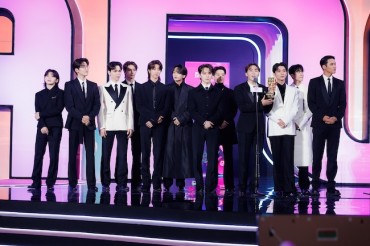
Wearing protective gear, a health worker cools down with an ice pack at a new coronavirus testing site in Seoul’s southwestern Yangcheon Ward on June 11, 2020. (Yonhap)
SEOUL, June 19 (Korea Bizwire) — South Korea, still stuck in first wave of coronavirus outbreak, is on alert over another potential round of virus infections in the summer, as a significant downturn in the virus appears unlikely.
Respiratory viruses, such as influenza, tend to subdue in the summer after surging in the winter season.
But experts said they cannot rule out the possibility that the virus outbreak could resurge at any time, even before autumn.
The spread of COVID-19 here has shown no signs of a letup even during hot weather.
The country’s virus cases have been on a steady rise this month. The number of new infections reached 754 in the first 17 days of June, already surpassing 729 cases in total reported in May, according to the Korea Centers for Disease Control and Prevention (KCDC).
The country reported 38 more additional cases on June 9 when the season’s first heat wave advisory was issued in Seoul.
South Korea has successfully flattened the virus curve, but the country has been grappling with a continued increase in cluster infections in the greater Seoul area since it relaxed social distancing in early May.
A respiratory virus usually proliferates when the weather is cold and dry as its survival largely depends on changes in temperature and humidity. People are more susceptible to infection as the immune system weakens in the winter.
SARS, the virus that is genetically similar to COVID-19, showed this pattern. It emerged in mid-November in 2002 in China and was brought under control in July 2003.
Experts said though hot weather may slow COVID-19 outbreaks, its spread may stretch into the summer given its transmission speed.
“Most people do not have immunity against the virus, so a second wave of mass infections could spring up at any time before fall comes,” said Choi Won-suk, a professor of the Infectious Disease Division at Korea University Ansan Hospital.
Against this backdrop, asymptomatic, “silent” virus spreaders will be one of key challenges for health authorities as such patients spread the virus unwittingly.
South Korea reported 49 new cases Friday, including 32 local infections, raising the total caseload to 12,306, according to the KCDC.
(Yonhap)






